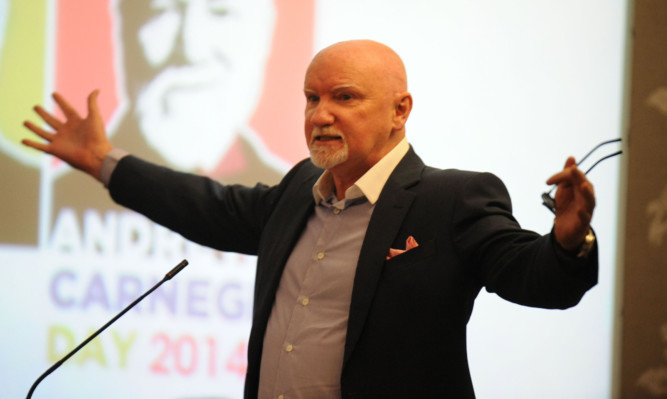Scottish children should learn about Fife’s famous son Andrew Carnegie, according to modern-day philanthropist Sir Tom Hunter.
Giving the keynote address at the enterprise breakfast to launch the second Carnegie Day in Dunfermline, the self-made businessman told invited guests on Tuesday: “The question I have asked in the Scottish Parliament is why do we not teach the Andrew Carnegie story in our schools today?
“We all know the story but why does every Scottish pupil not leave school with the gist of that story?
“His story deserves to be told and deserves to be understood.”
Carnegie, who was born on November 25 1835 in Dunfermline, is a global influence even today, Sir Tom added.
Even though he had only four years of formal education, he grew up in a family which believed in the importance of books and of learning.
“People do not chose to be born into poverty, or born with no opportunity,” Sir Tom said.
“Carnegie believed in, and I support the view, that opportunity should prevail for all, for all those working to get on the ladder themselves. We need Scotland to believe we can innovate, we can find the next Google, the next Amazon, the next Microsoft.”
Scotland as a whole had been inspired by the independence referendum, the holder of the Carnegie Medal for Philanthropy said, and he believes the nation now wants positive change.
“We do not want foodbanks opening or homelessness growing by the day,” he said.
“This is supposed to be a modern society, and that is not good enough for me, should not be good enough for you and certainly is not good enough for Scotland.
“We need to move away from the culture of blame and on to innovation.”
It is time, he added, to stop putting a sticking plaster on problems and instead look to sustainable solutions.
“Our politicians need to lead, not bicker, they need to innovate,” he said.
It was by working, by employing, by paying taxes and National Insurance contributions, by shopping locally and paying VAT that “made the world go round”.
In the referendum, politics was trying to extol Scotland as the land of milk and honey.
He said: “It is not that. But we can and will innovate our way out of the issues we face today but to do so needs a different mindset.”
The celebratory day continued with Baroness Shirley Williams leading a panel discussion on dialogue from conflict.
Picture by David Wardle
